Agriculture & Livestock
Agriculture
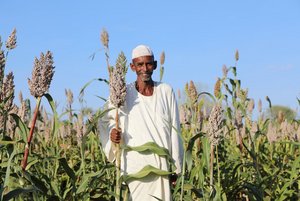
New cultures or cultivation methods can provide higher yields, better income prospects and more sustainable production. However, it is not always easy to convince farmers of the advantages and find first movers.
- Tackling pest-induced post-harvest loss under climate change(2024)
- Biodiversity-smart agriculture – the role of labour requirements(2023)
- Zero soil movement – adopting new techniques in potato production(2023)
- “Selling pesticides like biscuits” – challenges of pesticide governance in Zambia(2023)
- Support for smallholders in Nepal – are community business facilitators the answer?(2023)
- Long-term fertilisation strategies for blended agricultural sustainability are needed(2023)
- Markets for farmers and consumers, not for speculators and corporations(2023)
- High-hazard business(2023)
- Floods endangering below sea-level heritage farming system in India(2023)
- Producing nitrogen fertiliser with net-zero CO₂ emissions(2023)
- Improving organic farming practices in Africa with SMS, IVR, app-based training(2023)
- Locally produced fertiliser instead of costly imports (2022)
- How the war is changing agriculture in Ukraine(2022)
- Putting gender upfront in vaccine delivery systems(2022)
- Financing agriculture in West Africa – challenges and paradigm shift(2021)
- Lots of water for intensive cropping(2020)
- Scientists wary of crop protection programme(2018)
- White gold – Burkina Faso’s fight for quality(2018)
- Bhungroo – a women’s technology brings food and financial security(2016)
- The Beira Development Corridor – an upswing or a sell-out?(2016)
- An East African comeback(2016)
- “Zero pesticide” vegetables for the Indian market(2014)
- Acrocomia aculeata – a sustainable oil crop(2012)
- The rice paddy revolution(2012)
Animal husbandry
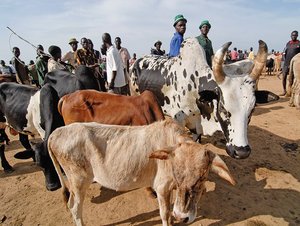
The livestock sector creates livelihoods for an estimated one billion people world-wide. Not only is the consumption of milk, meat and eggs an important source of protein and micronutrients and hence a crucial pillar of food security for the rural poor in particular. For many people, the sale of animal products is the most important, if not the only, source of income. In addition, the animals are a significant multifunctional asset. They provide dung, raising soil fertility, they are simultaneously beasts of burden and tractors, and they represent “hoofed insurance”, not to mention the social prestige that they endow their owners with in several societies. In spite of its important role, animal production has been an unfavourable topic in the development debate – mainly because of its environmental impact. Our authors show the challenges confronting livestock keepers around the world and ways to address them.
- Livestock and sustainable food systems – a complex relationship(2024)
- A sector in transition(2024)
- Learning from pastoralists(2024)
- Pastures benefit cattle welfare and product quality(2024)
- World map of pastoralists(2024)
- Livestock insurance – promise of a resilience-building tool for pastoral communities (2024)
- Unveiling opportunities and reducing climate vulnerability in the camelid value chain in the Andean Region(2024)
- Unleashing the potential of women livestock keepers(2024)
- Strengthening Uganda’s beef industry through innovation(2024)
- Farmer-herder conflicts in Africa – dynamics and potential solutions(2024)
- Effects of sedentarisation policies(2024)
- The untapped potential of protein diversification(2024)
- Women’s cooperative in the camel milk business shows resilience during drought(2023)
- Putting gender upfront in vaccine delivery systems(2022)
- Bridging the knowledge and skills gap in dairy husbandry (2021)
- The silent sheep revolution(2019)
- India’s dairy sector is not yet making use of its potential(2016)
- Livestock matter(2014)
- Livestock: recyclers that promote the sustainability of smallholder farms(2014)
- Tropical forage-based systems for climate-smart livestock production in Latin America(2014)
- Pasture management in Central Asia – regional learning for reform(2014)
- Pastoralism and conflict – two sides of a coin?(2014)
- Linking poor livestock keepers to markets(2014)
- Milk production pays off! – Experiences of a DPPP approach in Northern Sri Lanka(2014)
- Food security and poverty mitigation through smallholder dairy – the Zambian case(2014)
- Animal husbandry in cities – using potentials, reducing risks(2014)
- What is needed for reducing the greenhouse gas footprint?(2014)
- The insatiable hunger for cheap meat(2014)
- Mindsets for sustainability – let’s start with feed!(2014)
Agricultural policies

Over the last few decades, notions of agricultural development and hence agricultural policies have changed, depending on the circumstances and ideas happening to determine global politics. Much has proven to be wrong if not even disastrous for rural regions and has caused precisely the opposite of what was originally intended. Our authors give accounts of the lessons learnt and of what nowadays appears to be the right approach – from the angle of development co-operation and the partner countries, research and civil society.
- Free trade talks between the European Union and India(2023)
- A big victory for farmers in India as Modi repeals controversial farm laws (2022)
- Agricultural policies in the 2010’s: the contemporary agenda(2013)
- Providing an enabling environment(2013)
- Food security needs policy coherence(2013)
- Food security, agricultural policy and the role of small-scale farms(2013)
- The role of farmers’ organisations in defining national policies(2013)
- How to increase farmer organisations’ effectiveness?(2013)
- Envisaging alternative futures for African agriculture(2013)
- Agricultural policy reform and food security in China(2013)
- FAO’s Monitoring African Food and Agricultural Policies initiative(2013)
- Capacity development for agricultural policy advice(2013)
Organic farming
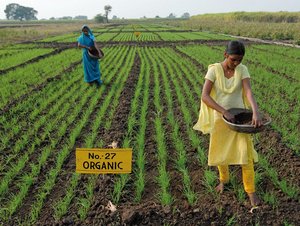
Is organic agriculture, which does not seek output maximisation, able to feed a growing world population, or will it always remain a fine but small niche? Can smallholders in the South achieve stable incomes by converting to organic production? Or is it possibly even grossly negligent to entice them to join the markets – doubtlessly expanding – for organic food as they may never actually be able to enter them due to the high quality standards and entry costs? While our authors do not have simple answers to these questions, they are very instructive.
- Organic agriculture – a viable solution to achieving the SDGs(2021)
- Organic equals conventional(2016)
- Organic farming is the name of the game(2016)
- Upscaling “organic by default” agriculture – a hope spot for drylands(2016)
- “Zero pesticide” vegetables for the Indian market(2014)
- Organic agriculture in developing countries: Status quo and challenges(2012)
- Organic agriculture and food security – not a contradiction(2012)
- Changing agriculture in a changing climate(2012)
- Standards and certification: means, not ends(2012)
- A viable alternative?(2012)
- Linking smallholders to organic supply chains: what is needed?(2012)
- Farming with a conscience(2012)
- Paving the way for Serbia’s organic agriculture towards the EU(2012)
- Challenges and opportunities for organic research and extension(2012)
Plant breeding
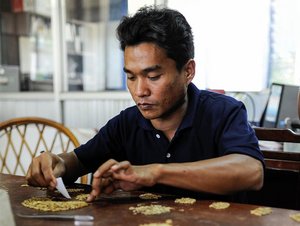
Specialists from international agricultural research centres give accounts of their activities in plant breeding. This had been prompted by the ruling of the European Court of Justice in late July 2018 stipulating that new plant breeding technologies such as genome editing receive the same legal treatment as conventional genetic engineering methods do. While this does not ban their application (in Europe), they are now subject to stringent regulatory conditions. In response to this development, leading scientists from more than 85 European plant and life science research centres issued a position paper warning that the ruling was “irresponsible in the face of the world’s current far-reaching agricultural challenges”.
It is by no means intended to once again spark the old debate on the pros and cons of genetic engineering – the arguments here are by and large well familiar, and positions are more or less firmly established. Rather, what we want to show is which developments plant breeding has seen over the last few decades and what challenges it faces today given climate change and more and more global crises.
- Once again, Africa is used as a justification to push for bad legislative change in Europe(2019)
- How plant breeding helps to feed the world(2019)
- Interfacing conventional and modern approaches to speed up and focus plant breeding(2019)
- Nerica – tailor-made innovation for Africa’s rainfed rice ecology(2019)
- The EU ruling on plant breeding and what it means for Africa(2019)
Rural Finance
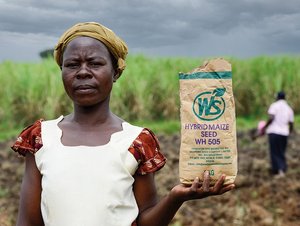
So far, global food and agricultural policies have not succeeded support agri-food systems benefiting the many and taking threats to ecosystems into account. What we need is not only a mobilisation of resources, but, above all, a transformation of our food finance architecture.
- Just rewards, or just rewarding business-as-usual?(2022)
- Sustainable food systems need True Cost Accounting(2022)
- Tax or spend? What is at stake for agri-food systems transformation(2022)
- Supply chain finance – a viable option for smallholder farmers?(2022)
- Towards a renaissance of agricultural development banks in sub-Saharan Africa?(2022)
- The CAADP 10 per cent target – still pursued by African leaders?(2022)
- "Human capital will play a pivotal role in the transformation of African economies"(2022)
- Assessing the effectiveness of multilateral funds in coping with drought(2022)
- "The bankers are interested in the low-hanging fruits"(2022)
- Food system transformation needs private sector support(2022)
- "Private actors are much closer to reality"(2022)
- "We have a shared goal to improve the sustainability impact of the agri-food sector"(2022)
- Financing agriculture in West Africa – challenges and paradigm shift(2021)
- Microfinance lending for farming in Congo – a worthwhile risk?(2013)
- Engaging smallholders in value chains: who benefits under which circumstances?(2012)
- Land investment for maximum impact(2012)
- The supermarket revolution and smallholder farmers(2012)
Rural mechanisation

It’s easy to find arguments in favour of raising the degree of farm mechanisation. People’s living conditions improve, for the drudgery that also makes farming so unattractive for young people is no longer necessary. Standardised, optimised processes along the entire value chain raise the quality of primary and processed goods; harvest and post-harvest losses are reduced.
- Machinery rings – an innovative approach to mechanising Kenyan agriculture(2022)
- Rural mechanisation – where are we now, and where should we be going?(2015)
- A round tour of mechanisation(2015)
- Animal traction – potential and constraints(2015)
- Mechanisation – a catalyst for rural development in sub-Saharan Africa(2015)
- “Farmers have to get organised”(2015)
- Sustainable mechanisation – a hard row to hoe(2015)
- Solar pumps and drip irrigation help Indian farmers save water and energy(2015)
- Sorting out the cocoa maze with pole pruners(2015)
- Biodegradable mulch – a solution for small-scale horticulture? (2015)
- A food processing machine that makes a difference(2015)



